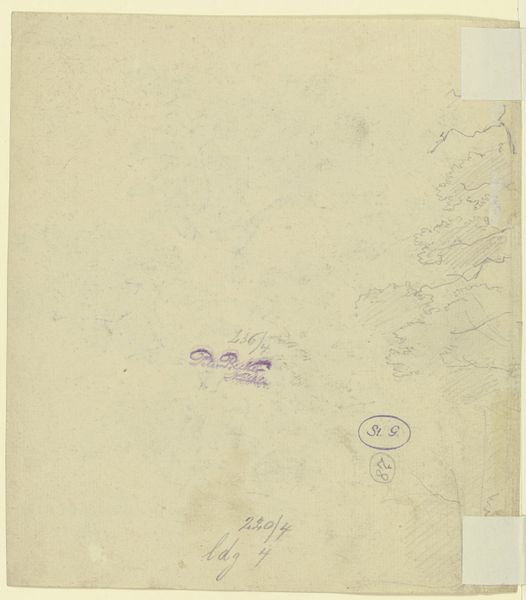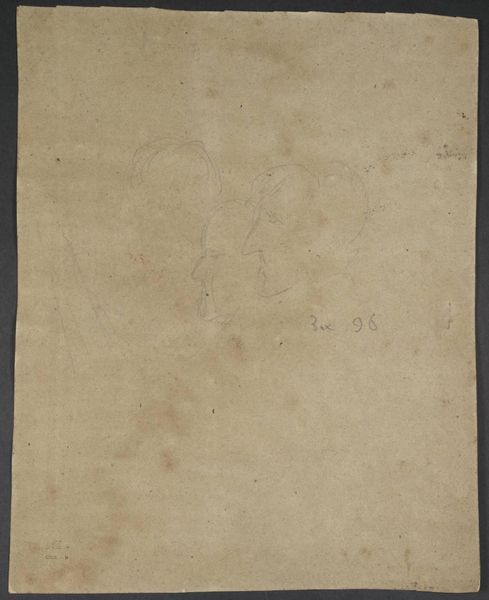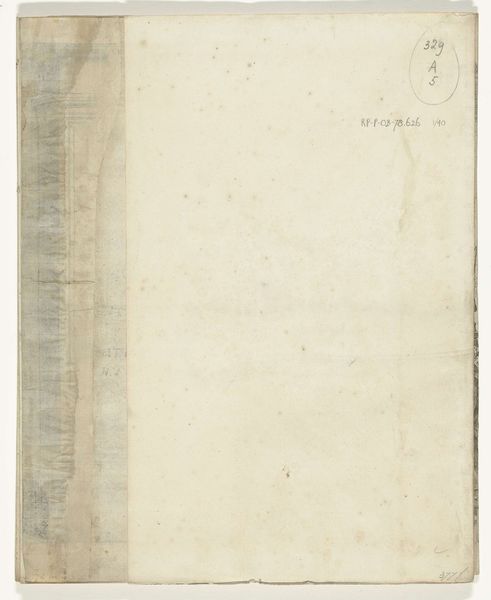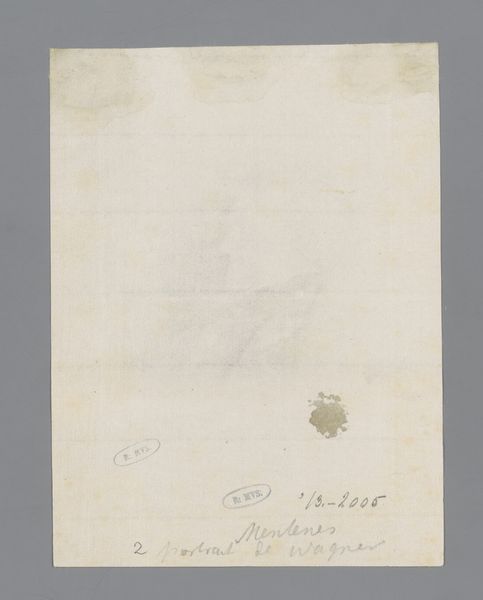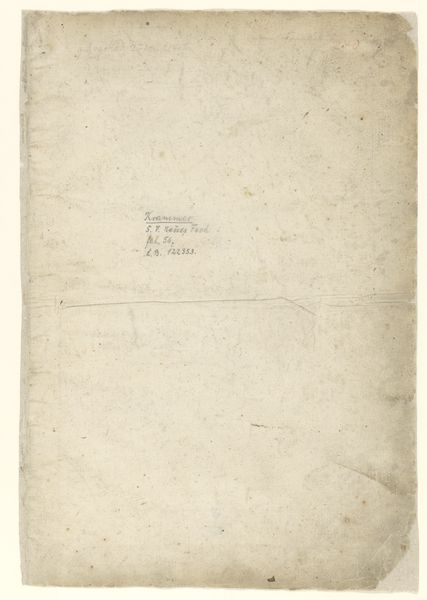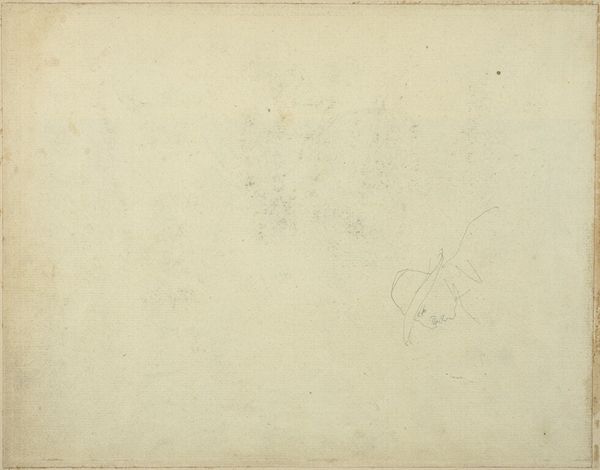
drawing, pencil
#
portrait
#
drawing
#
baroque
#
pencil
Dimensions: height 227 mm, width 191 mm
Copyright: Rijks Museum: Open Domain
Editor: This is "Schets van het hoofd van een neerziende vrouw," or "Sketch of the Head of a Downward-Looking Woman" by Matthys van den Bergh, made sometime between 1627 and 1687. It's a pencil drawing, and quite delicate. I’m struck by how ephemeral it feels. What catches your eye about this piece? Curator: Well, immediately I'm drawn to the materiality of the work. Consider the paper itself: its age, its texture. Notice the chain lines, the watermarks; these are all traces of the handcrafting process that went into producing the support for the image. This drawing is a product not only of artistic skill, but of the larger economic system supporting paper production. How might the availability, or scarcity, of paper at that time influence the artist's choices? Editor: That’s a really interesting point! I hadn’t considered the paper itself as being significant. I was so focused on the lines and the portrait. It's almost like you’re saying the paper has its own story to tell, connected to labor and production? Curator: Precisely! Think about the artist’s pencil too – where did the graphite come from? Who mined it? How was it processed? These questions shift our attention from simply appreciating the aesthetics of the finished sketch to understanding its embeddedness in social and industrial networks. Do you see how this focus might challenge our traditional definitions of “art”? Editor: Definitely. It moves the focus away from just the artist’s genius and opens up a much wider field of inquiry. It encourages us to see the drawing as part of a larger system. Curator: Exactly. And, understanding these aspects enriches our appreciation by giving us context: perhaps a new consideration for valuing materials available at the time that could lead to art. Editor: This makes me think differently about not only the art production of the Baroque period but the art production now. Thank you. Curator: Indeed! It is valuable to consider the conditions that enable the art we appreciate now.
Comments
No comments
Be the first to comment and join the conversation on the ultimate creative platform.






